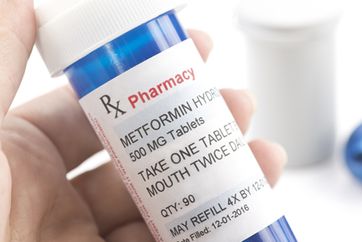Metformin shows promise for vascular health in adolescents with type 1 diabetes
PHILADELPHIA — Adolescents with type 1 diabetes already show early hallmarks of cardiovascular disease, and an intervention with a commonly used type 2 diabetes therapy can improve their vascular health and reduce future CV risk, according to a speaker at the Heart in Diabetes conference.

CVD is the leading cause of death in type 1 diabetes, and 35% of youths with type 1 diabetes develop at least two CV risk factors by the time they enter adulthood, Jane E.B. Reusch, MD, professor of medicine and associate director of the Center for Women’s Health Research at the University of Colorado Anschutz Medical Campus, said during a presentation. Strategies are needed, she said, to prevent or reverse the onset of CV pathology in type 1 diabetes.
“Even with all of the incredible new technology that we can apply to the management of type 1 diabetes, particularly adolescents have had worse control over the last 4 to 5 years. than they have had earlier in this decade,” said Reusch, also the former president of medicine and science for the American Diabetes Association. “If you have youth-onset type 1 diabetes, meaning before age 12 years, you have a decrease in life expectancy of 11 to 13 years according to data that just came out a few years ago.”
Reusch and colleagues found that youths with type 2 diabetes had “profound” insulin resistance that correlated with glucose level, and they decided to measure insulin resistance in adolescents with type 1 diabetes, she said.
“Much to our surprise, the type 1 youth have equal insulin resistance to obese youth,” Reusch said. “When we looked at these kids, they were lean and didn’t have a lot of other interesting parameters aside from abnormal glucose.”

Additionally, Reusch, who runs a lab that studies exercise intolerance in diabetes, found that the decreased VO2 max observed in adults with diabetes was also present in youths with type 1 diabetes, she said. Similarly, renal dysfunction in type 1 diabetes also correlated with decreased VO2 peak. Adolescents with type 1 diabetes also demonstrated early markers of diastolic dysfunction.
“This left us with a premise that agents that augment insulin action for people with type 2 diabetes could possibly be used for youth with type 1 diabetes,” Reusch said.
Reusch and colleagues set out to test two hypotheses, she said — that metformin improves insulin action and that metformin would improve CV function in adolescents with type 1 diabetes.
In a randomized, placebo-controlled study, researchers analyzed data from 48 adolescents with type 1 diabetes assigned to receive 2,000 mg daily metformin therapy (n = 25) or placebo (n = 23) for 3 months. Participants underwent MRI to measure the ascending and descending aorta to assess pulse wave velocity, relative area change, and wall shear stress. Researchers also assessed carotid intima media thickness by ultrasound, brachial distensibility, fat and lean mass via DXA and measured insulin sensitivity via hyperinsulinemic-euglycemic clamp.
At 3 months, researchers found that, compared with placebo, adolescents assigned to daily metformin demonstrated improved glucose infusion rate, reduced body weight (mean, –0.5 kg vs. 1.6 kg; P = .004) and reduced fat mass (mean, –0.7 kg vs. 0.6 kg; P = .01).
“Even with just this 3-month treatment with metformin, we saw an increase in insulin sensitivity as well as an improvement in their overall weight,” Reusch said. “Metformin is not a weight-loss drug. We don’t know if [the finding] was because we were paying attention to them, but, either way, they lost a little weight.”
Additionally, compared with placebo, adolescents assigned metformin showed reduced aortic wall sheer stress (mean, 0.3 dyne/cm² vs. 1.5 dyne/cm²; P = .03), reduced pulse wave velocity (mean, 1.1 m/s vs. 4.1 m/s; P = .04) and a trend for improved far-wall diastolic carotid intima-media thickness (mean, 0.04 vs. 0; P = .049), Reusch said.
“Youth with type 1 diabetes are going to die of cardiovascular disease,” Reusch said. “Now is the time to treat them. We took a very safe, very well-studied medication used in people with type 2 diabetes and showed it changed insulin action, fat mass and aortic properties in just 3 months.” – by Regina Schaffer
Reference:
Reusch JEB, Metformin in youth with type 1 diabetes. Presented at: Heart in Diabetes CME Conference; July 12-14, 2019, Philadelphia.
Bjornstad P, et al. Circulation. 2018; doi:10.1161/CIRCULATIONAHA.118.035525.
Disclosure: Reusch reports no relevant financial disclosures.

